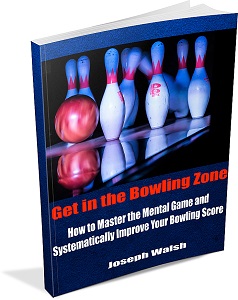A common metric that bowlers use to gauge their stroke is RPM, or revolutions per minute. This means the total revolutions that the ball makes on its way down the lane, weighted to the time period of one minute. Some calculate this by measuring the time it takes your ball to travel down the lane (using video recording) and counting the number of revolutions (here is a youtube video explaining this further, and a forum discussion about measuring revs) Others calculate it with the speed or your shot and the number of revs. Either way, the RPM measure is a common framework for which to compare different bowlers and their strokes.
Many beginning bowlers see the impressive RPMs of professional bowlers on TV and immediately think that more revs is inherently better. In many cases, this is not the case: you don’t want to try to force yourself to throw more revs than comes natural to you, and it’s not realistic to try to emulate many of these pros. The main factor that affects your RPM, aside from the bowling ball you’re using and the lane conditions, is the distance your fingers travel during the moment of release. If you’re interested in learning more, you can find an interesting discussion of rev rates here.
Finally, here is a really helpful video that shows comparisons of different releases and RPMs and exactly how the ball looks for these different strokes.
What do you think about bowling releases and RPM? What RPM level are you currently at? Do you consider it a major factor in your bowling game?


Leave a Reply